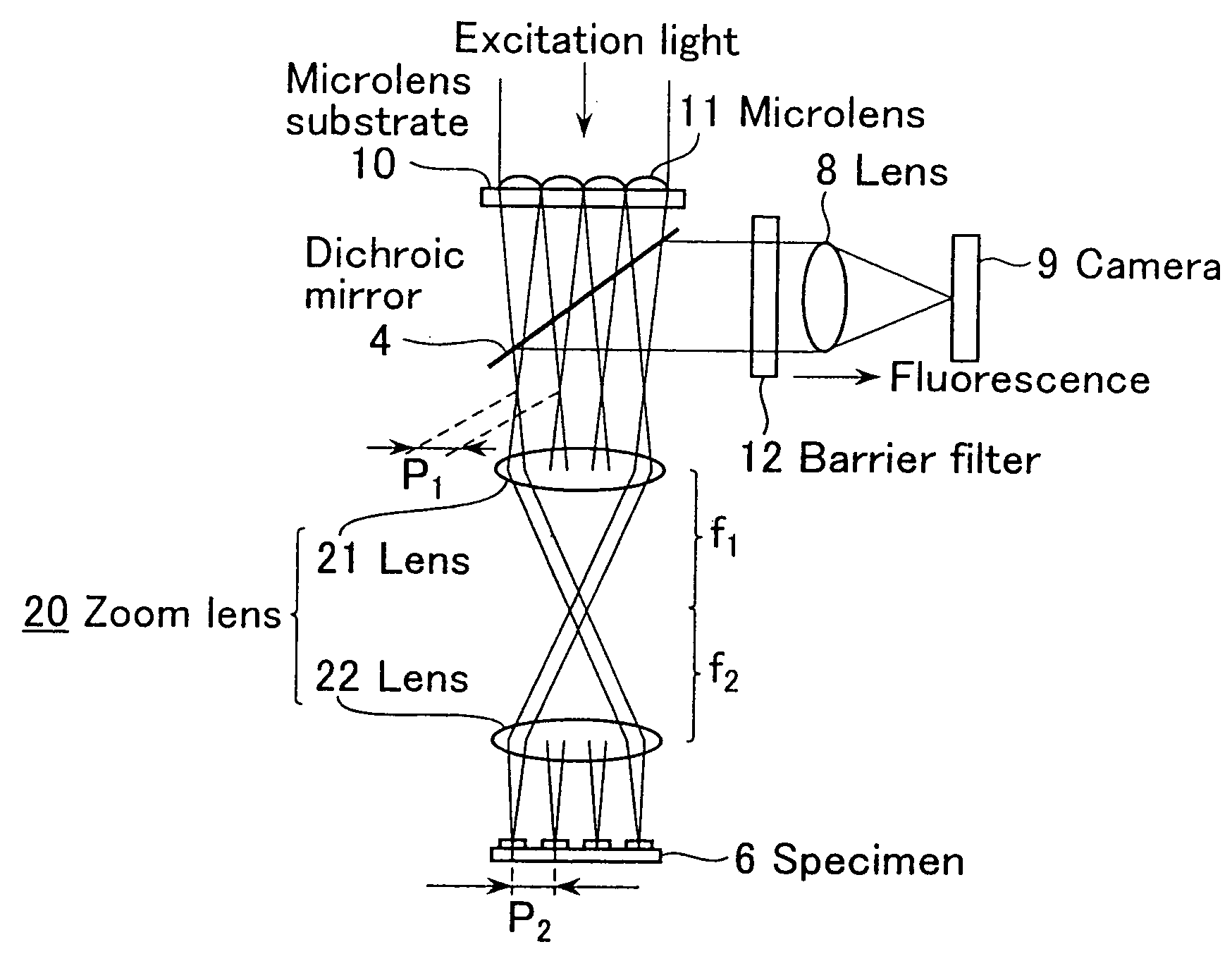Biochip reader and fluorometric imaging apparatus
a fluorometric imaging and biochip reader technology, applied in the field of biochip readers, can solve the problems of inconvenient operation, inconvenient use, and inconvenient use of the conventional apparatus as discussed abov
- Summary
- Abstract
- Description
- Claims
- Application Information
AI Technical Summary
Benefits of technology
Problems solved by technology
Method used
Image
Examples
Embodiment Construction
[0046]Now the present invention will be described in detail with reference to the accompanying drawings. FIG. 3 is a schematic view showing one embodiment of the biochip reader in accordance with the present invention. In the figure, elements identical to those shown in FIG. 1 are referenced alike and excluded from the description hereinafter presented.
[0047]In FIG. 3, numeral 10 denotes a microlens substrate, numeral 11 denotes a microlens, numeral 12 denotes a barrier filter, and numeral 20 denotes a telecentric zoom lens. On microlens substrate 10, a plurality of microlenses 11 are arranged at equal pitch P.sub.1.
[0048]Zoom lens 20 comprises lens 21 with focal length f.sub.1 and lens 21 with focal length f.sub.2, where both focal length f.sub.1 and focal length f.sub.2 are variable. Zoom lens 20 is located between dichroic mirror 4 and specimen 6.
[0049]Note that although each of lenses 21 and 22 is illustrated as a single lens for the sake of convenience, these lenses are usually...
PUM
| Property | Measurement | Unit |
|---|---|---|
| focal length | aaaaa | aaaaa |
| fluorescent | aaaaa | aaaaa |
| fluorometric imaging | aaaaa | aaaaa |
Abstract
Description
Claims
Application Information
 Login to View More
Login to View More - R&D
- Intellectual Property
- Life Sciences
- Materials
- Tech Scout
- Unparalleled Data Quality
- Higher Quality Content
- 60% Fewer Hallucinations
Browse by: Latest US Patents, China's latest patents, Technical Efficacy Thesaurus, Application Domain, Technology Topic, Popular Technical Reports.
© 2025 PatSnap. All rights reserved.Legal|Privacy policy|Modern Slavery Act Transparency Statement|Sitemap|About US| Contact US: help@patsnap.com



